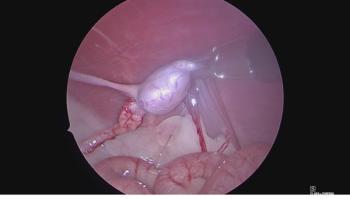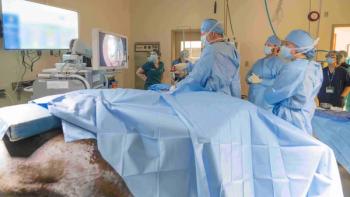
Vaccine-associated sarcomas in cats
Expert advice on surgical excision.
Vaccine-associated sarcomas are uncommon, but when they do occur, they can be aggressive and potentially difficult to manage in cats. Although any cause for a local inflammatory response-from an injection of any sort, including microchips-can result in the formation of these types of sarcomas, they are all typically classified as vaccine-associated.
Preventive measures
The American Association of Feline Practitioners developed guidelines in 2006 for vaccine administration (catvets.com/professionals/guidelines/publications). All vaccines should be given subcutaneously, as intramuscular administration may decrease the likelihood of early detection of these masses.
Nonadjuvanted vaccines should be used when available, especially for rabies and feline leukemia virus (FeLV), as these have been implicated in inflammation associated with vaccine-associated sarcomas.1 The rabies vaccine should be administered in the right pelvic limb below the stifle joint, the FeLV vaccine in the left hindlimb below the stifle joint, and the feline viral rhinotracheitis (with or without calcivirus) vaccine in the right thoracic limb below the elbow joint.1 Note that controversy remains regarding some of these recommendations, and alternative suggestions can be found in the literature.
Diagnosis
Any mass that has been present for more than four months or that is greater than 2 cm should be biopsied. Incisional biopsy is preferred over excisional biopsy; incisional biopsy allows gross disease to remain, so obtaining appropriate surgical margins is easier when complete mass excision is performed.
Photo 1: A 9-year-old castrated male domestic shorthaired cat with a sarcoma over the lateral scapula. On this coronal view of a CT scan, the capsule of the mass can be identified as it runs cranial to the scapula and is highlighted by the arrow. The skull is toward the top of the figure.
Treatment options
Once the diagnosis is confirmed, options include aggressive surgical management and/or radiation/chemotherapy. Treatment depends on the size and location of the mass. Large masses located on or near the pelvis, for example, typically are not good surgical candidates. For tumors amenable to surgical excision, aggressive surgery is recommended.
Scapular and pelvic lesions tend to be the most difficult to resolve surgically, while appendicular lesions may be managed with amputation alone. Cats with surgically excised appendicular masses have a longer survival time than do cats with these tumors located on their trunk.
Radiation therapy is often recommended either in addition to or in lieu of surgery. Chemotherapy has been found to be beneficial, too.
Photo 2: A transverse CT view of a 12-year-old spayed female domestic shorthaired cat with a sarcoma over the lateral thoracic wall. Invasion between the ribs is noted by the arrow. Dorsal is toward the top of the figure.
Guidance on surgical excision
Ultrasonography, computed tomography (CT) or magnetic resonance imaging (MRI) can help assess the level of the tumor's infiltration into the surrounding deeper tissues (Photos 1 and 2). Excision beyond the visible margins on CT or MRI is still recommended.
For aggressive excision, 3- to 5-cm margins are obtained laterally, with the deep margin being two fascial layers or body wall resection. Measuring the lateral margins and denoting them with a sterile ruler and marker can help maintain margins, as the skin often contracts after initial incision (Photo 3). Skin tension can be a problem in some of these patients, requiring reconstruction with local or axial pattern flaps.
For masses on the thoracic body wall, the deep margin should include ribs and intercostal musculature. For those on the abdominal cavity, the full thickness of the abdominal wall should be excised. Polypropylene mesh reconstruction can be used for large abdominal body wall wounds or resection of more than three ribs.
For other locations, the associated muscular layer and fascia of the deeper layer should be excised. If the mass is in the dorsal region, the spinous processes within the proposed surgical site should be included so that 3- to 5-cm lateral margins are achieved. If the mass is on a limb, amputation may be curative if the level of the amputation is 3 to 5 cm proximal to the mass.
Marking the lateral and deep layer of the surgical site with radiopaque suture (e.g., vascular clips) can assist with follow-up radiation. Inking of the excised mass's deep margin and marking the lateral edges with suture or staples can help the pathologist determine where residual tumor lies. Over-the-counter India ink works well, but be sure to allow it to dry before placing the tissue in formalin.
Photo 3: Using a sterile marker and ruler to mark the margins around the mass will help to guide initial dissection.
Recurrence
Local recurrence of these sarcomas is more common than metastatic disease. Metastatic spread occurs in up to 25 percent of cases and can be seen in lungs, skin, lymph nodes and other organ systems. If recurrence is at the surgical site, it's typically within six months of surgery. This can occur despite clean margins on histopathology, and it's often why radiation is recommended. Recurrent masses tend to be more infiltrative and more difficult to excise, so attempting to cure with the first surgery is ideal, as the prognosis worsens with increasing number of surgeries.
Other poor prognostic indicators include:
• A castrated male
• A large tumor size
• Long intervals between surgery and radiation
• Incomplete excision.
Surgeon experience also will influence outcome.
Prognosis
Vaccine-associated sarcoma excisions can be challenging surgeries to perform, but with aggressive surgery and radiation, one-year survival rates can be as high as 86 percent.
Newsletter
From exam room tips to practice management insights, get trusted veterinary news delivered straight to your inbox—subscribe to dvm360.




